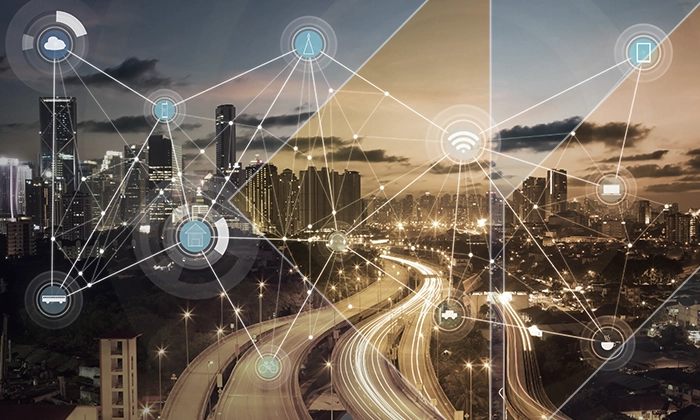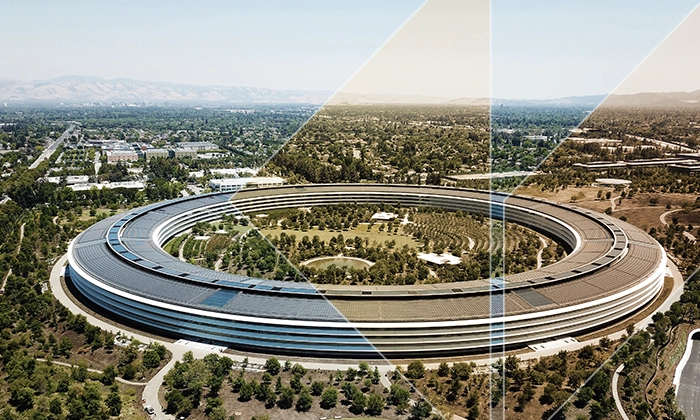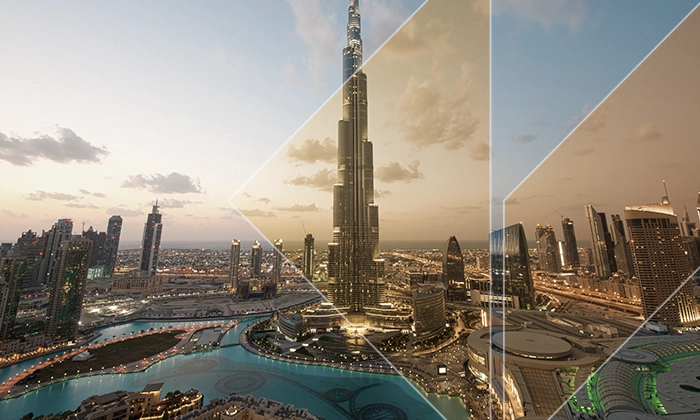Being smart is cooler than ever. But what makes something smart is pretty hard to define. Every day there seems to be a new term being described as such – just think of smartphones, smart cars, smart buildings, and smart cities.
But what really makes something smart are the technologies that power it. In today’s “smart era”, the construction industry is using smart building technology to create a better built environment.
Learn more here about what smart buildings are, what technologies they use, and discover a few examples of these buildings around the world.
What is a Smart Building?
A smart building is a structure equipped with innovative materials and technologies that allows for all its systems to be automated and self-regulated. By making use of technologies like IoT (Internet of Things), a smart building seeks to improve the usability of the structure, optimize its efficiency, and enhance its safety and accessibility, all while making it more sustainable and environmentally conscious.

Here’s a quick example: intelligent buildings control temperature and manage lightning through the incorporation of sensors that help optimize energy consumption in the structure.
This can be especially useful in buildings with a reduced occupation (think flexible working!) or during non-working hours (hopefully for you, weekends). Data collected from the building’s sensors is interpreted by software, making predictive maintenance possible according to pre-established criteria.
This results in a significant reduction in the monthly bills related to energy consumption of the building.
The technologies behind smart buildings
The incorporation of certain technologies is what differentiates a smart building from a standard one. Take a deeper look at how each of these technologies makes construction smarter.
- AI & MAchine Learning
- BIM
- AR & VR
- Internet of Things
- Connected Systems
- Sensors everywhere
- Automation
Artificial Intelligence & Machine Learning
Artificial intelligence (AI) is a general term for describing the simulation of human intelligence by machines. This includes tasks such as language processing, problem solving, and machine learning, which refers to algorithm-based computer systems that can learn from data without having to be programed.
As spending on construction increases around the world, so are the solutions that incorporate AI technology according to a 2020 report from McKinsey. There are numerous benefits to using AI solutions in different stages of the construction value chain: design, bidding, financing, materials management, etc.
AI can use its predictive capabilities to reduce costs, better manage workforces, prevent risks, enhance project planning, and monitor worksites during and post-construction.
BIM
Building Information Modeling (BIM) is a methodology for processing large amounts of information and data to make building planning, design, construction, and management more efficient.
BIM is a key part of the construction industry’s digital transformation, and it helps make buildings smarter because it facilitates more sustainable, precise, collaborative, communicative, and safer infrastructure.
AR & VR
Augmented reality (AR) and virtual reality (VR) technologies permit designers, architects, and engineers to envision a project before its completed, which is why smart buildings are often constructed using these revolutionary technologies.
Moreover, blueprints can be programmed into 3D and be superimposed onto current project sites to visualize elements otherwise not apparent or detectable and to predict future stages of a construction project.
AR and VR allow employees to navigate clearly within complex structures or foreign environments conveniently and at a lower cost than other more capital-intensive technologies.
But that’s not all…AR and VR can also be integrated into buildings for entertainment purposes post-construction! The applications of these technologies within our homes and offices are endless. It’s worth considering how you would apply AR/VR in your office – for efficiency, entertainment, or BOTH?
Internet of Things (IoT)
When examining how smart buildings operate, a catchy acronym stands out almost every time: IoT. But what is it and how does it come into play when speaking about smart buildings?
The Internet of Things (IoT, for short) is a conglomerate of web-enabled smart devices that use embedded systems, such as processors, sensors, and communication software, to collect, send and act on data they acquire from their environments.
Human intervention is not 100% necessary, although people are free to interact with the software to set them up and access its data. IoT, combined with artificial intelligence (AI) and machine learning can help make data collection even more efficient and easier to gather.
In an article by Alexander Gillis on TechTarget, he shares that IoT is most abundant in manufacturing, transportation, and utility organizations; however, it has also found use cases for organizations within the agriculture, infrastructure and home automation industries, leading some organizations toward a 21st century digital transformation.
Although it’s recognized as a new technology, incorporating IoT technologies is not exclusive to new building projects only. By adding a diverse set of smart enablers, like sensors to regulate lighting and temperature, security systems, telecommunication devices, and IT software, an already existing building can be retrofitted to become “smart” with IoT technology.
Connected Systems
Many buildings already use smart technologies in their facilities to control specific areas within their structures, however, this doesn’t mean they’ve secured a “smart building” recognition. The next step to achieve this is to ensure that all smart building solutions are integrated, and that data processing software is well implemented to maximize the building’s efficiency.
A centralized platform is not required to ensure the functionality of all smart systems, but having one single user interface and dashboard to monitor, control, and identify inefficiencies among all systems integrated into the platform makes management and analysis easier for building owners and facility coordinators.
Sensors everywhere
Sensors are a very important player when it comes to making a smart building. They help allow the building managers and integrated systems to properly gather the amount of data needed to maximize its efficiency and make informed decisions to properly allocate resources.
Automation
No data goes to waste. A smart building constantly collects information that must be automatically analyzed by systems in real-time. This ongoing monitoring requires automated adjustments to control and optimize conditions across an entire building.

The purpose of an intelligent building
It’s no surprise that smart building projects are becoming more common across the global construction industry. To cut down the environmental impact and energy consumption of buildings, many large- and medium-sized cities in United States are requiring commercial building owners to disclose their green building performance.
By including modern control and automation techniques, smart building solutions can:
- produce significant energy savings,
- promote sustainability and protect the environment,
- improve the health and safety of its occupants, and
- enhance the quality of life for those who reside within it.
But like everything, smart buildings have both advantages and disadvantages. Below are some of the main ones you should know about.
Pros
In addition to making buildings more energy efficient and self-regulating, these five benefits should also be considered when designing a smart building:
- Reduced energy consumption & enhanced efficiency – With the integration of smart sensors in various locations, energy consumption from lights and temperature control systems can significantly decrease, since they´ll only work when it is needed. This maximizes the building’s resource efficiency, eliminates the fight over the thermostat in offices (very much appreciated, right?) and reduces both the electricity bills and carbon emissions from the building.
- Access to better insights and visualization with big data – These buildings collect large amounts of data at all times. With this information, smart buildings can identify trends and uncover optimization opportunities, enabling decision makers to make informed data-driven decisions regarding the structure.
- Predictive maintenance – Systems in a building can have unseen failures from time to time that can go unnoticed and cause major flaws in the future. Smart technologies in a building allow for the quick detection of these failures, help understand why they occurred, and prioritize which issues to fix first. In other words, they prevent fires instead of putting them out.
- Better space usage – Smart buildings are designed to make the experience of their inhabitants more pleasant and seamless. Especially after 2020 when we all became acutely aware of spatial constraints, smart spaces consider how to raise standards and comply with health and safety regulations, all while keeping up profitability.
- Better building value – Make no mistake, a smart building raises its market value once it has all the proper smart technologies implemented. A study by Fortune Business Insight forecasts that by 2026, North American smart building revenues alone will amass $34.2 billion (USD), with global smart building revenues anticipated to reach $127.09 billion (USD) by 2027, a noteworthy CAGR of 12.5% over the 2020 to 2027 period.

Cons
Nonetheless, this doesn´t come without a challenge. Understanding IoT technologies and their integration can be a difficult task for those who are not fully immersed into it.
When deciding to go smart, the first step is to become well acquainted with the different technologies available and how to integrate them among each other.
Likewise, as IoT technologies and cloud connectivity become increasingly implemented and accepted, a smart building becomes more susceptible to threats regarding its cybersecurity. An unexpected security breach may affect more than one functionality of a smart building, making it inoperable in the most extreme cases.
Thankfully, however, as IoT blooms across multiple industries, cybersecurity has also become one of the top priorities for many companies, making it easier to secure data and avoid major security outbreaks.
Smart buildings examples around the world
1- Allianz Arena in Munich, Germany
The home of the football club FC Bayern Munich uses an array of sensors and cloud-based analytics to keep track of the health of the grass on the field and make recommendations. From controlling the irrigation system to the incorporation of acoustic cameras combined with sound mapping to study how fans respond to key moments of games, the Allianz Arena is an exemplary smart building in Germany.

2- Apple Park in Cuppertino, California
Apple Park’s circular building is not a favorite amongst architects, yet the building is one of the most energy-efficient structures internationally. It´s powered entirely by renewable energy through the solar panels installed on the roof of the structure that generate 17 megawatts of energy — one of the biggest totals of any solar roof.

3- The Crystal in London, United Kingdom
The Crystal features a sophisticated building management system that keeps tabs on every kilowatt of electricity consumed. The solar roof panels generate about 20 percent of its power and it´s systems monitor the energy consumption rigorously. As a result, The Crystal generates 70% lower carbon emissions than other office buildings in the UK.

4- Burj Khalifa, Dubai
Not only is the Burj Khalifa the world’s tallest building, it´s also on the edge of innovation, receiving the distinction of being one of the smartest and most sustainable buildings. It´s equipped with several intelligent building schemes that improves air quality, lighting, and temperature for its residents. The building´s automation system capture data on real time through algorithms that identify errors and maintenance issues. This helps facility managers improve building maintenance and asset reliability.

As advances in new technologies in the construction industry continue to bloom, also do stakeholders expectations related to smart buildings and smart cities. CEMEX Ventures is working to facilitate these technologies that suit the upcoming needs by working alongside innovative startups that have solutions fit for the cities of the future.


